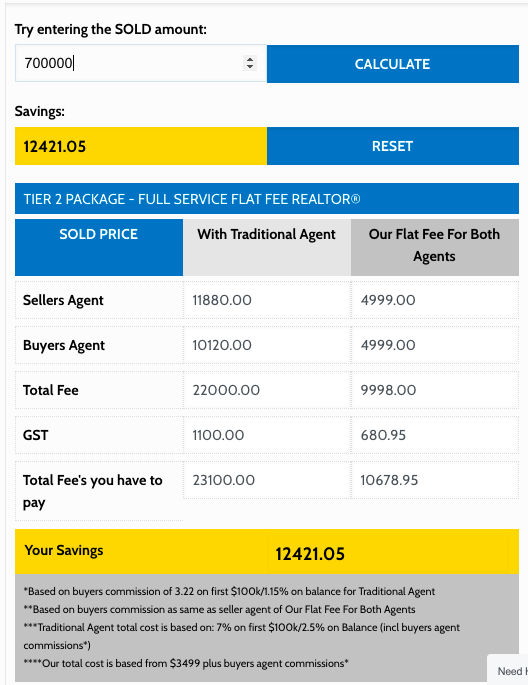4 Content Ideas to Delight Prospects at the Consideration Stage
What you’ll learn about identifying content ideas for the consideration stage:
- At the consideration stage, you need to understand the consumer’s pain points — and show this in your content
- You can answer their questions with video, infographics, ROI calculators, and webinars
- While they require time and a healthy budget, these pieces will help you stay top of mind with your prospects as they make their purchasing decision
We’ve written about the buyer’s journey before, elaborating on the three key stages, and what types of value you can deliver at each stage. In this post, we’re doing a deeper dive on content ideas for the consideration stage — the point where you start to make a case for your own services while still educating your prospects.
Oftentimes, this is where visitors start to shop around, and consider (see what we did there?) their options. If they aren’t completely satisfied with your solution and the content you’ve produced to promote it, they’ll leave your site or social media platform, potentially never to return. The alternative? You’ve produced content that’s so engaging and informative, that your audience can’t help but trust your brand and what it has to offer – making your product or service even more appealing.
So with that in mind, let’s dive into how you can convert more visitors into customers during the consideration stage of the buyer’s journey.
First Rule: Put Yourself in Your Prospect’s Shoes!
We touch on this so much, but it bears repeating: before you develop content, you need to understand your audience’s perspectives, desires, and the questions they might be asking at this stage. If you have buyer personas in place (or if you’re interested in a free template to make new ones), you can use these as a starting point to think from their perspective.
At this point, they know what the pain point is and what they need to solve it. The questions they’re asking are based entirely on comparing the different solutions available to them:
- Is this brand a thought leader or innovator in the space?
- What are others saying about their products?
- Can I trust this brand/service provider?
- Does this solution directly address my pain points? And does it address all of them?
- Does this save me time or money?
- How can I best educate myself on the solution that’s best for me?
Before you even start to mind map content at the consideration stage, you should be digging into how everything you create can answer these questions.
4 Content Ideas for the Consideration Stage
To really stand out from the crowd, your content should be centered around the customer’s pain point and how it can be alleviated. This does two things: it helps build your authoritative voice and it provides context and continuity for when you present them with a solution further down the funnel at the decision stage.
Here are four types of content that can help you do just that.
1. Video Content
Video marketing gives you the option to give a ‘face’ and ‘voice’ to your brand, while sharing content in a snackable, easy-to-digest way. Brands that get video right at the consideration stage help consumers understand what their products and services are all about — and how they solve for particular use cases — while remaining engaging.
2. Infographics, Cheatsheets, and Checklists
Sometimes, the use case a company is trying to solve for is complex. For example, technical services such as setting up e-commerce channels or developing successful ad campaigns require multiple tasks and a comprehensive service that needs explaining to anyone not in the know. Creating visually appealing, informative resources that buyers in the consideration stage can follow along with (such as a checklist or infographic) can illustrate your expertise and the extent of work that you could potentially save them from if they decide to outsource.
3. Cost Savings Calculators
If you can give someone time back in exchange for a service, you’ll be providing a product that people will want. On the flip side of the coin, if you can illustrate how someone can save money using your product or service, it creates an appealing offer. Similar to the psychology of sale tags, the idea of saving any amount of money generates interest — so if you can show a potential buyer how they can save money, you’ll be top of mind when they get further down the funnel. Below is an example we found on a real estate agent’s site that clearly shows you how much money a seller can save in commission by choosing his flat fee service. The calculator provides an interactive experience for prospective customers, where they can see exactly how much money they stand to save.

Cost-saving calculators to create content in the consideration stage
4. Webinars and Podcasts
Have you heard us talk about the importance of audio and video marketing in all of its glorious forms yet? If not here’s an intro to how a podcast or a webinar can be broken down into bite-size content bits across several platforms. Webinars and podcasts require a lot of work upfront, but they live forever and can be repurposed or pointed to during all stages of your buyer’s journey. Again, as with most long-form content, webinars provide visitors with a trusted source who is credible within the industry. The great thing about webinars and live broadcasts/podcasts is the length of attention you get from your audience. In an age where the typical attention span is less than that of a goldfish, being able to express your expertise and connect with a community of keen-to-learn buyers for 30+ minutes is an incredible opportunity to build and share your knowledge.
Final thoughts and Tips to Remember
Now if it seems like the content ideas we’ve shared require a lot of work — that’s because they do. Keep in mind that this is a critical stage of the buyer’s journey and it’s imperative you stay at the top of mind with the right content. When it comes down to the decision stage, the value that you’ve conveyed and the authority and trust you’ve built will serve you well.
We said it before, but if you’re looking for ideas of what to write and the perspective of the people that have found, used, and valued your service, look no further than the testimonials you’ve gathered. Use their quotes and work them into your content to address a pain point at the consideration stage.
Finally, don’t look to close the deal in the consideration stage. Use this opportunity to further explain the intricacies of their pain points, and how your product can solve them. Convey your expertise, but provide them with the tools to try it themselves. More often than not, they’ll see the value in finding a better solution that saves them time or money, and when they get to the decision phase in their journey, they’ll likely come to you first.


